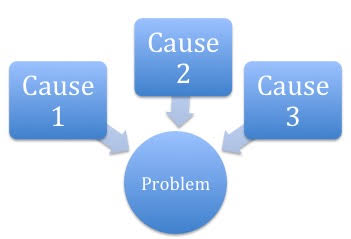Evidence-Based Practice
EBP process
The EBP process has 5 steps:
- Ask - Develop a relevant, answerable clinical question
- Acquire - Plan, search & find the best available evidence
- Appraise - Critically appraise articles for validity & applicability
- Apply - Integrate the evidence into practice
- Assess - Evaluate your clinical decision

Background questions
What is a background question?
Background questions are used to gain a better understanding about a particular health condition and to identify search terms. The essential components of background questions are:
1) A question root (who, what, where, when, how, why)
2) A disorder, test, treatment
Examples:
- What causes diabetes?
- When might complications after stroke occur?
Textbooks, monographs, or web resources are good sources of answers to background questions.
PICO questions
What is a PICO question?
This type of question is focused on clinical decision-making. You could be asking for a comparison of two competing options or looking at one option and deciding if it is an effective, safe or cost-effective option. This type of question requires the use of PICO, which is a handy way to describe a case in 4 distinct parts.
-
Patient, Population or Problem
-
What are the characteristics of the patient or population?
-
What is the condition or disease you are interested in?
-
-
Intervention or Exposure
-
What do you want to do with this patient (e.g. treat, diagnose, observe)?
-
-
Comparison
-
What is the alternative to the intervention (e.g. placebo, different drug, surgery)?
-
-
Outcome
-
What are the relevant outcomes (e.g. morbidity, death, complications)?
-
Additional Information
For further reading on how to formulate an appropriate background question, see the following resources:
- Formulating Answerable Clinical Questions Centre for Evidence-Based Practice, University of Toronto
- EBP Example Questions
Define and understand the problem
-
Consider the complexity and level at which the problem exists
-
Is it related to diagnosis, specific personal or environmental factors, specific practitioner issues, or something at the level of the health service, policy or social context?
-
“…having more than one level challenges us to use more than one theoretical approach.” (Campbell et. al.
 2007)
2007)
-
-
Consider all of the potential causes and pathways
-
Draw connections between the causes and problem
-
-
What does the evidence (empirical or anecdotal) tell us?
-
Is there a problem with the innovation?; Is there a problem with the way the intervention gets implemented?; Is there a lack of money or organizational structure?; Is there difficulty generalizing the research findings to practice situations?; Is there a lack of time, skills, or resources?
-
What is the extent of the problem?
-
-
Avoid the “zone of wishful thinking”. Consider whether the intervention to address the problem of practice is actionable. Is it something that is doable and achievable? Sometimes the problem of practice is too broad. Consider ways to break the problem down into parts – then tackle just one part of the problem.
-
Recognize that defining the problem of practice and selecting the appropriate intervention is an iterative process
Your problem may be:
- Specific to a patient population (e.g. biomechanical disability, balance, mobility, dexterity, etc.);
- Related to an intervention (e.g., effectiveness testing, selecting appropriate interventions, design-redesign);
- More generally associated with clinical practice (e.g. cost, efficiency, confidence in administration, education, sustainability, business practice needs, change in practice norms, marketing, continuous improvement systems, etc.);
- Related to professional issues (e.g., continuing education, government policy issues, self-care like compassion fatigue, etc.); or
- A research proposal for any of the previous listed topics.
